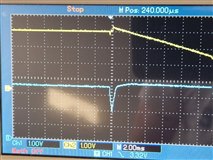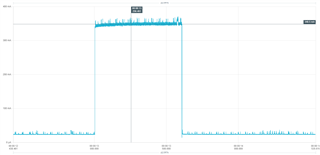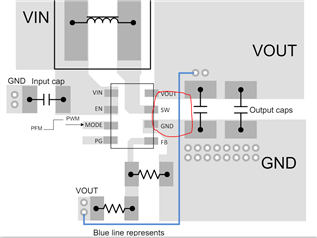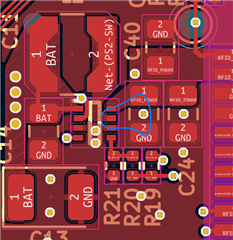Other Parts Discussed in Thread: TPS61230A, TPS61230, , TPS61022, TPS61253A
The IOT device is powered by a 3.6V 14.5Ah LiSOCl2 Non-rechargeable battery.
The device contains 2 powerful consumers: a GSM/LTE module and a UHF RF module.
GSM module - 3.8V / 2.0A, UHF RF 5.0V / 2.2A.
The current revision of the board uses the following converters:
1. GSM power supply - FAN48623.
2. UHF RF Power - TPS61230A
FAN48623 did not suit us because... it is BGA, TPS61230A stopped working if the input voltage dropped below 2.5V.
In the next revision I would like to use a converter from the TPSxxxx line.
1. It is highly desirable to use the same boost DC-DC IC for GSM and UHF power supply.
2. It is advisable not to use BGA.
3. When working with GSM+UHF, the battery power may not be enough and the voltage may drop to 2.3-2.4V. Now in this case the TPS61230 stops delivering 5.0V / 2.2A.
For the test, a board with TPS61033 was made. I assumed that it might not be suitable for getting 5.0V / 2.2A, but I was sure of getting 3.8V / 2.0A... but it turned out wrong :(
For the second day now I have been unable to start GSM: at the moment of registration in the GSM network, I see a current jump of 1.5A and the MCU reboots. The reason for the reboot is a voltage drop below the minimum permissible value. The device is powered by a 3.6V power supply with a current limit of 4A. Visually, this looks like a short circuit at the Vin input of the TPS61033. Moreover, if you specially short-circuit Vout, then the current is limited normally and with a short circuit of Vout TPS61033, the rest of the circuit continues to work normally.
If the input voltage of the device is increased so that the TPS61033 switches to Pass-through mode, then everything works fine.

During the debugging process, I increased the output capacitance to 4x22uF, removed R18, saw that the GND path was not very good and duplicated it with a short wire, removed the D5 diode (with the help of it I wanted to isolate the GSM power supply from the UHF RF power... so that short-term power failures from UHF operation would not led to a reboot of LTE (LTE can sleep and consume <1ma)).
This didn't help...
Tell me what I'm doing wrong with the TPS61033 or tell me the correct choice of other devices.














